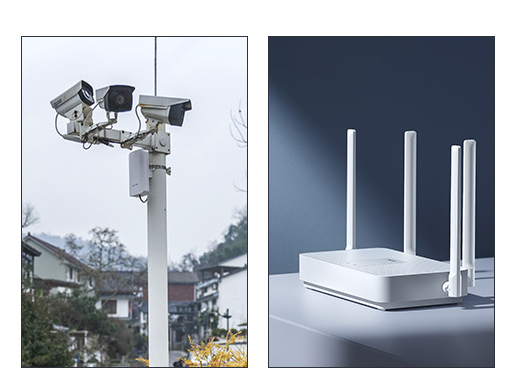difference between smart antenna and regular antenna
The difference between smart antennas and regular antennas
In the field of wireless communication, antennas are one of the crucial components responsible for transmitting and receiving radio waves. With the development of technology, smart antennas (also known as smart RF systems or adaptive antenna systems) have gradually become a research hotspot, and they have many unique advantages compared to traditional ordinary antennas. Below, I will provide a detailed analysis of the differences between smart antennas and regular antennas from several aspects.

1. Working principle:
Ordinary antennas are usually designed with fixed radiation modes and directions, and once installed, their service range and performance remain largely unchanged. Smart antennas can automatically adjust their radiation characteristics according to changes in the signal environment, such as changing the direction, shape, and width of the beam to adapt to different communication needs and environmental conditions.
2. Beamforming technology:
Smart antennas typically have beamforming capabilities, which means they can "focus" radio waves in specific directions, thereby improving signal quality and coverage. In contrast, the beam of a regular antenna is usually fixed and cannot be dynamically adjusted.
3. Interference suppression:
Smart antennas can recognize and suppress interference signals from unexpected directions, improving the signal's anti-interference ability. This is particularly important for signal transmission in complex wireless environments. Ordinary antennas lack this adaptive ability, so their performance may decrease in environments with high interference.
4. Spatial diversity:
Smart antennas can utilize spatial diversity technology to receive different versions of the same signal through multiple antenna units, and then process these signals to reduce the impact of multipath fading. Ordinary antennas usually do not have this capability, so in environments with obvious multipath effects, the performance of smart antennas is more stable.
5. Spectral efficiency:
Due to the fact that smart antennas can more accurately control the propagation of radio waves, they can more effectively utilize spectrum resources. This means that within the same frequency band, smart antennas can support more users or provide higher data transmission rates.
6. Energy consumption management:
Smart antennas can dynamically adjust power output according to communication needs, thereby achieving greater energy efficiency. Ordinary antennas typically operate at a fixed power throughout the entire time, which may result in unnecessary energy consumption.
7. Application scope:
Smart antennas, due to their advanced characteristics, are particularly suitable for application scenarios that require high signal quality, high data transmission rate, and high reliability, such as mobile communication networks, satellite communications, radar systems, etc. Ordinary antennas are widely used in various basic wireless communication scenarios, such as wireless network access, broadcasting and television signal transmission, etc.
8. Cost and Maintenance:
The design and manufacturing costs of smart antennas are usually higher than ordinary antennas because they require the integration of more sensors, processors, and control algorithms. Meanwhile, the maintenance of smart antennas may also be more complex as they require regular software updates and hardware calibration.
In summary, the main difference between smart antennas and regular antennas is that smart antennas have higher adaptive and spatial processing capabilities, which enables them to perform better in complex wireless environments. However, these advantages also bring higher costs and more complex maintenance requirements. When selecting antennas, a balance should be made between specific application requirements and cost-effectiveness.





